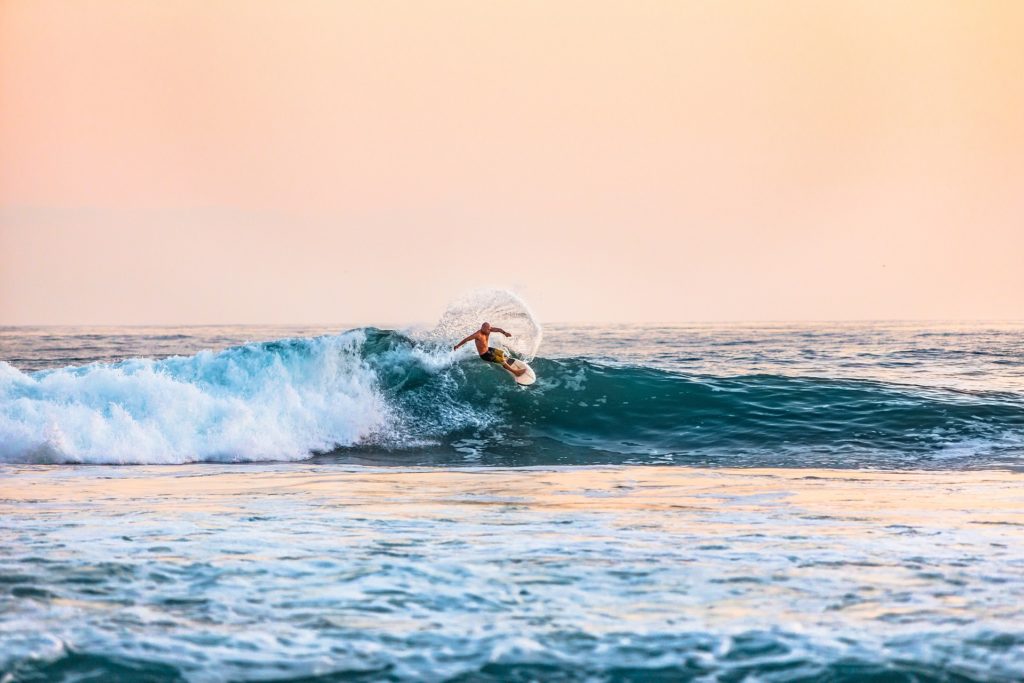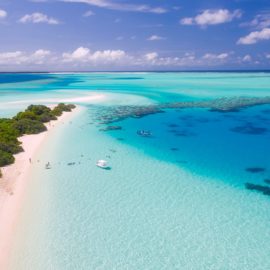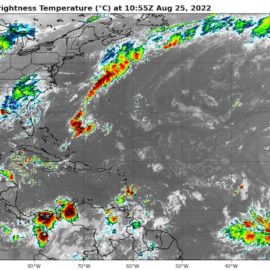
Anastasia State Park in Northern Florida was a surfers paradise.
As a kid, Zander Morton grew up surfing some of the most storied waves in the American South. Middles and Blowhole, as locals called the two surf spots inside Anastasia State Park, took the Atlantic’s energy and formed consistent, world-class waves that generations of surfers in St. Johns County in the 1990s grew up riding — a rare thing for Florida. Surfers like Morton talk about those waves with a reverence usually reserved for deities. But they only do so in the past tense: The waves disappeared at the turn of the 21st century, almost overnight. They are among the many surf breaks that have now vanished, an illustration of just how quickly terrain can change, if not disappear entirely, because of a complicated set of factors that affect waves: Deepwater canyons, shifting sand and human intervention along the beach in the forms of jetties, piers or engineering projects.
nytimes.com
The Corps helped with the waves.
Like almost everything in St. Augustine’s history, the remarkable waves on that stretch of beach, which became popular in the 1960s, were ensconced in origin myths. Most people credit the interplay between storms that molded an ever-changing set of islands, work done by the Army Corps of Engineers, and bathymetry for creating two of the best waves on the East Coast. “It was a destination,” said Walter Coker, a photojournalist who lived in St. Augustine for more than three decades and began surfing those waves in the 1970s. “There’s only a handful of spots in Florida that have that kind of status.” In the past few decades, surfers like Morton and Coker have watched as the coastline in North Florida has changed. The fast-acting effects of erosion, powerful storms and rising sea levels have become intimately familiar to them. That knowledge — unique to local surfers — has become indispensable to those who are forming a record of what was. “No one knows that tiny patch of coast better than they do,” Dan Reineman, an assistant professor of environmental science and resource management at California State University Channel Islands, said of local surfers. The anecdotal evidence collected from surfers has become increasingly precious data for researchers, he said.
Then came a study of the California beach surf sites.
In 2017, Dr. Reineman and his colleagues published a study in which more than a thousand local surfers estimated how rising sea levels might impact California surf spots by the year 2100. Only a few spots were predicted to improve, and many places along California’s coast, the study showed, might actually be able to adapt. Out of the 105 surf breaks the study analyzed, more than a third were deemed vulnerable to sea-level rise, meaning that some waves would disappear completely. “What I find alarming, from the perspective of surfing, is how coastal communities react to changing coastal conditions,” Dr. Reineman said. “We choke off sand supplies, plug up watersheds, dam rivers. We are changing the coast’s ability to adapt as sea level rises.” In a place like Florida, where the barrier islands have long bowed under the weight of unfettered development, there is little that can be done aside from fortifying the shoreline with sea walls, jetties or, as many communities prefer, periodic beach renourishment. According to tide tables and the data collected by Dr. Reineman in Florida, most of the popular surf spots throughout the state would drown with just a foot of sea-level rise.
What might have caused this – other than rising water.
Ever since Middles and Blowhole disappeared, Morton and Coker have wondered whether it was the dredging of outer sandbars, sea-level rise or something else that destroyed those surf spots. In 2001, the Army Corps took sand from the St. Augustine inlet and dumped it along the coast to prevent homes from falling into the Atlantic. “Those sandbars were gone,” Coker said. “The place has never been the same since.” Since the mid-’80s, as dune lines have washed away throughout St. Johns County, Al Sandrik has watched, both as a surfer and as the National Weather Service’s warning coordination meteorologist in Jacksonville, Fla. “There’s no doubt we’re seeing more significant beach erosion, and it’s threatening more structures,” he said. He pointed to the southern part of the county, where a former inlet has breached from the Summer Haven River into the Atlantic at least seven times in the last six years, leaving residents listless while the county spends millions to try to renourish the fragile sandspit.
Hurricane season meant better waves.
East Coast surfers used to look forward to hurricane season the way skiers pray for snow. As faraway storms formed off Cape Verde, they knew some of the best waves of the year were on their way, with little chance of hurricane winds or the damage they cause. In St. Augustine, a storm in the Atlantic often ensured that Middles and Blowhole would come alive when a swell arrived. But in the past decade, local surfers have come to dread the hurricane season. In St. Augustine, they reel off the names of hurricanes from memory. In 1960, there was Donna. In 1999, it was Floyd. But the threat of a direct hit seemed distant at best. Then, in 2016, Hurricane Matthew buzzed the coast, flooding thousands of homes in St. Johns County. “St. Augustine never flooded,” remembered Morton, who grew up there. “That wasn’t something we thought about.” In 2017, just eleven months after Matthew, Hurricane Irma flooded places that had previously been bone dry. And then in September 2022, residents added Hurricane Ian to the list of storms as it lashed the entire state. Last year, as hurricane season ended and the air turned cool, the area where Blowhole and Middles once drew thousands of surfers was in some ways returning to its former self. As the dunes grew, the beach did, too. Soon, well-formed sandbars were taking shape while other parts of the county were eroding just as quickly. In June 2022, the Florida Department of Environmental Protection deemed just under half of St. Johns County’s coastline critically endangered. Since 2001, local, state and federal agencies have spent more than $125 million on projects to address erosion, including the renourishment of St. Augustine Beach and attempts to restore the Summer Haven river.
It is a push and pull existence.
That constant push and pull between the ocean and the residents living along its edge has formed as many waves as it has buried. Beach renourishment in the northern end of St. Johns County temporarily drowns waves like Vilano, just north of the St. Augustine Inlet, while dredging just south of the inlet creates a remarkable point break for a few weeks some years in the spring and fall. It’s an ongoing dance of tides and wind, one that is briefly controlled by structures like jetties or renourishment, but always choreographed by the Atlantic. “Giving coasts the ability to naturally adapt, for sandbars to form and move, those are the things we can do to help ensure that natural surf breaks can persist,” Dr. Reineman said. Before Hurricane Matthew, Coker remembered the sense of excitement he once felt as forecasters named storms in the Atlantic. He could close his eyes and see a set of waves marching in toward the beach. And as the afternoon rains returned along with the humidity by the first day of June, the opening of hurricane season meant good waves were not far away. But after his home flooded during Matthew, and again during Irma, his excitement turned to a sense of dread as the names were unveiled. He didn’t care whether there would be a good window of surf. He just didn’t want to go through the destruction of his home again.
Changes to the situation and rising seas make the hurricanes worse.



